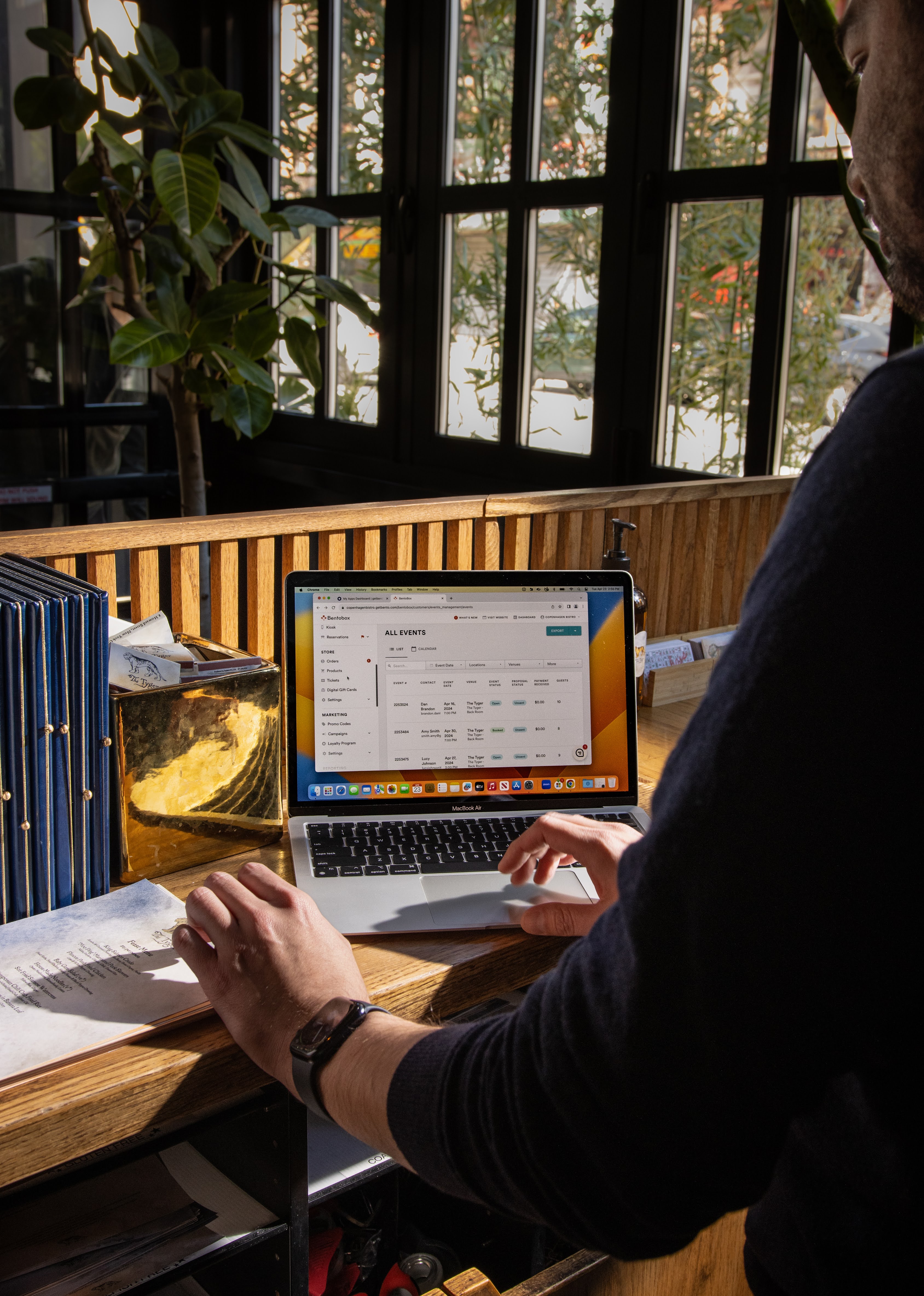COVID-19
Restaurant Reopening Data: What Diners Expect From Restaurants
May 8, 2020
We surveyed a representative set of 500 diners from across the nation to gain insight into what restaurants should implement when reopening.
As restaurants around the nation begin to reopen, diners are curious as to what the post-COVID-19 dining experience will look like. Reopening guidelines for restaurants will (and already do) look different from state to state, city to city — even differing at the county level. To help restaurant owners get a clearer understanding of how to navigate this period beyond government guidelines, it’s essential to look at what diners will be expecting. We surveyed a representative set of 500 diners from across the nation to gain insight into what restaurants should implement in their reopening strategies.
What Diners Say about Staff, PPE and Cleanliness
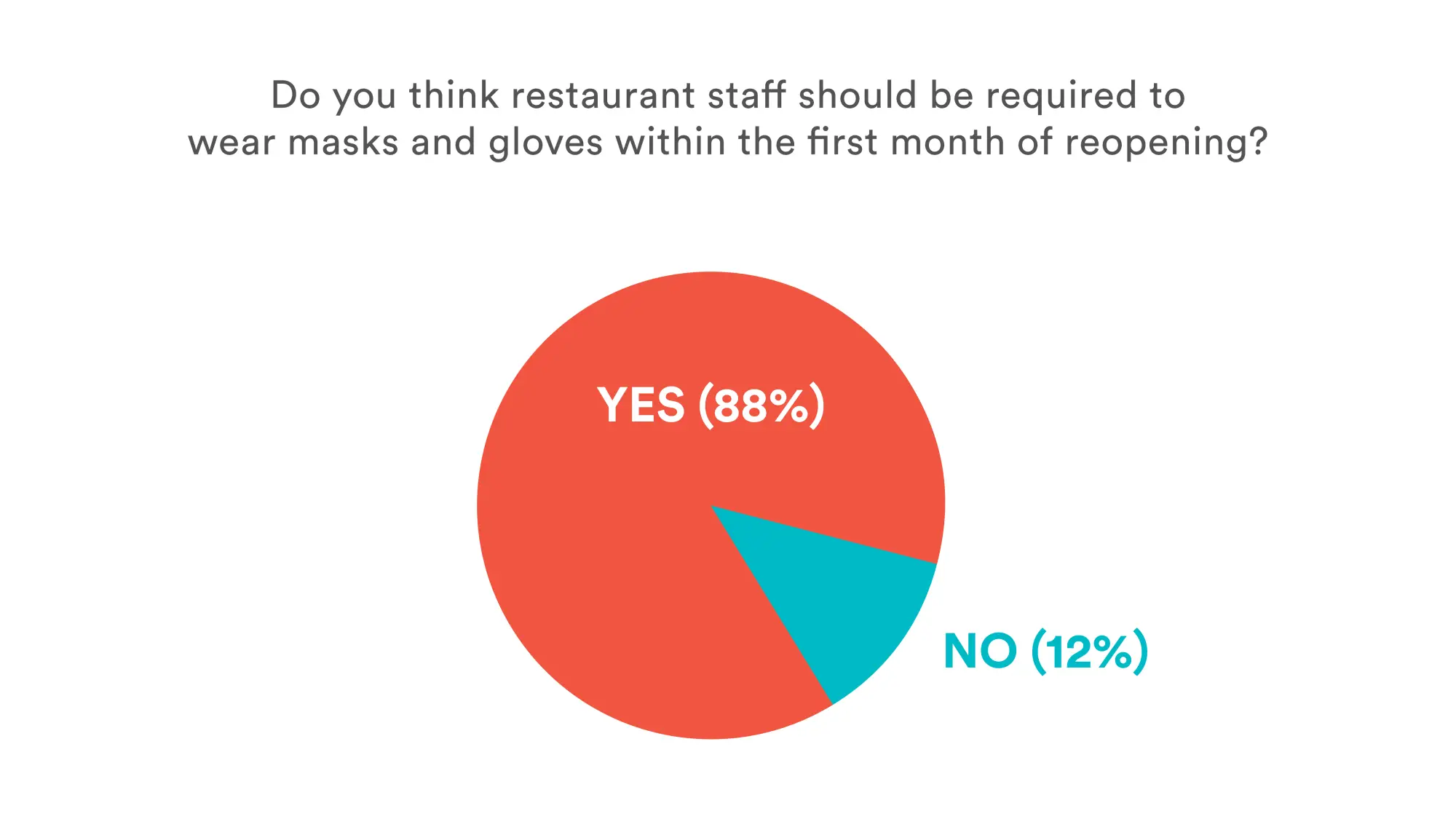
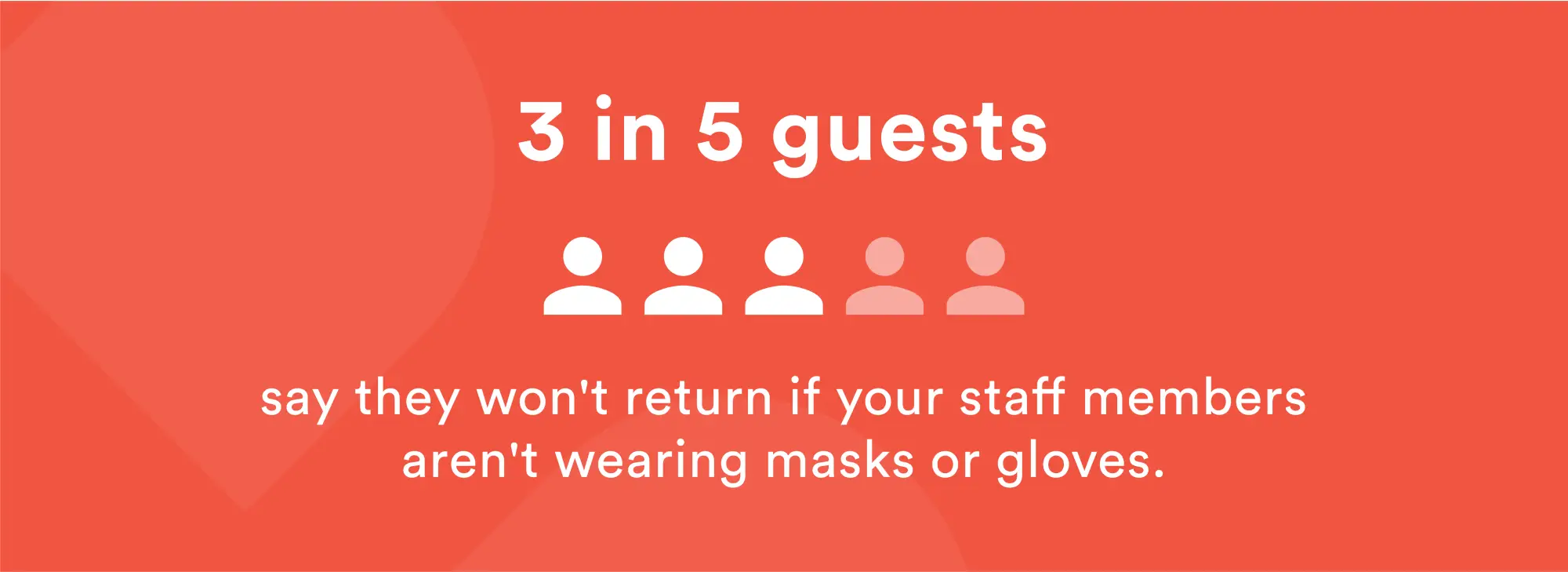
88% of diners agreed that restaurant staff should be required to wear Personal Protective Equipment (PPE) within the first month of reopening restaurants. Diners want to see staff members wearing masks and gloves. It’s important for restaurants to give their guests the comfort of feeling safe. Without this, not only do they hurt their ability to foster revisits but they almost guarantee a decline to repeat visitor rates.
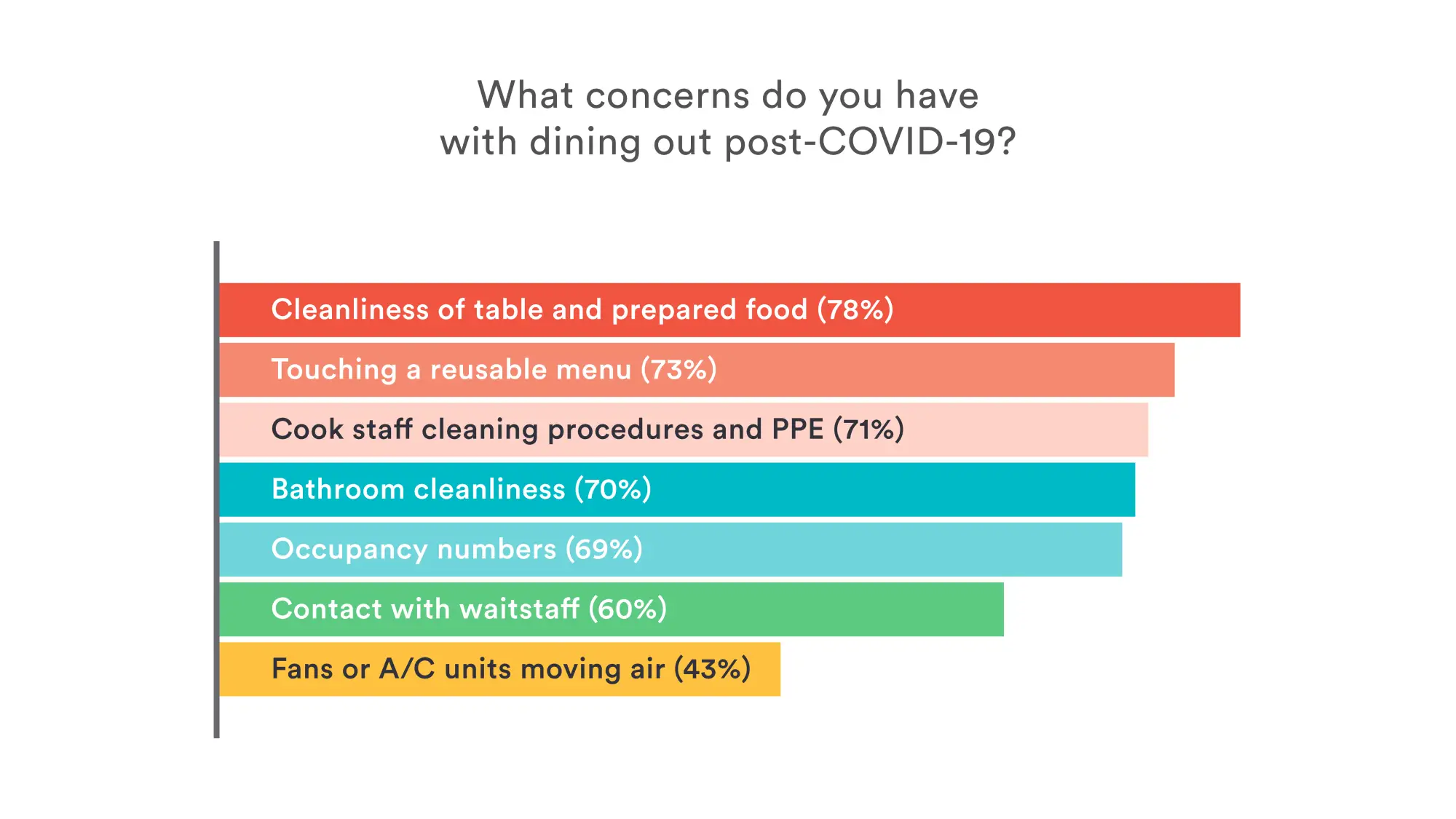
When prompted with a series of answers on what concerns diners had with dining out post-COVID-19, the top 2 concerns were the cleanliness of the table and prepared food as well as touching a reusable menu. Additional concerns were staff cleaning procedures and PPE, bathroom cleanliness, occupancy numbers, contact with waitstaff, and the air circulation through fans and A/C units. Restaurants should adjust procedures and offerings for health and safety, like adding table signs about their procedures. When it comes to the restaurant space, read actionable tips from CORE Architecture & Design.
Diners Plan to Continue to Order Online

With reduced seating at the same overhead cost, it is difficult to turn a profit with on-premise sales alone. Restaurants may need another revenue stream. We suggest that restaurants consider online ordering for pickup and delivery if they haven’t already done so. Here’s why:
When asked whether diners plan on continuing to order online for pickup and delivery after reopening, 43% of surveyed diners said they plan to order a mix of both pickup and delivery, while 27% said they would mostly pick up their orders. 12% plan to have meals mostly delivered and 18% do not plan to order online at all.
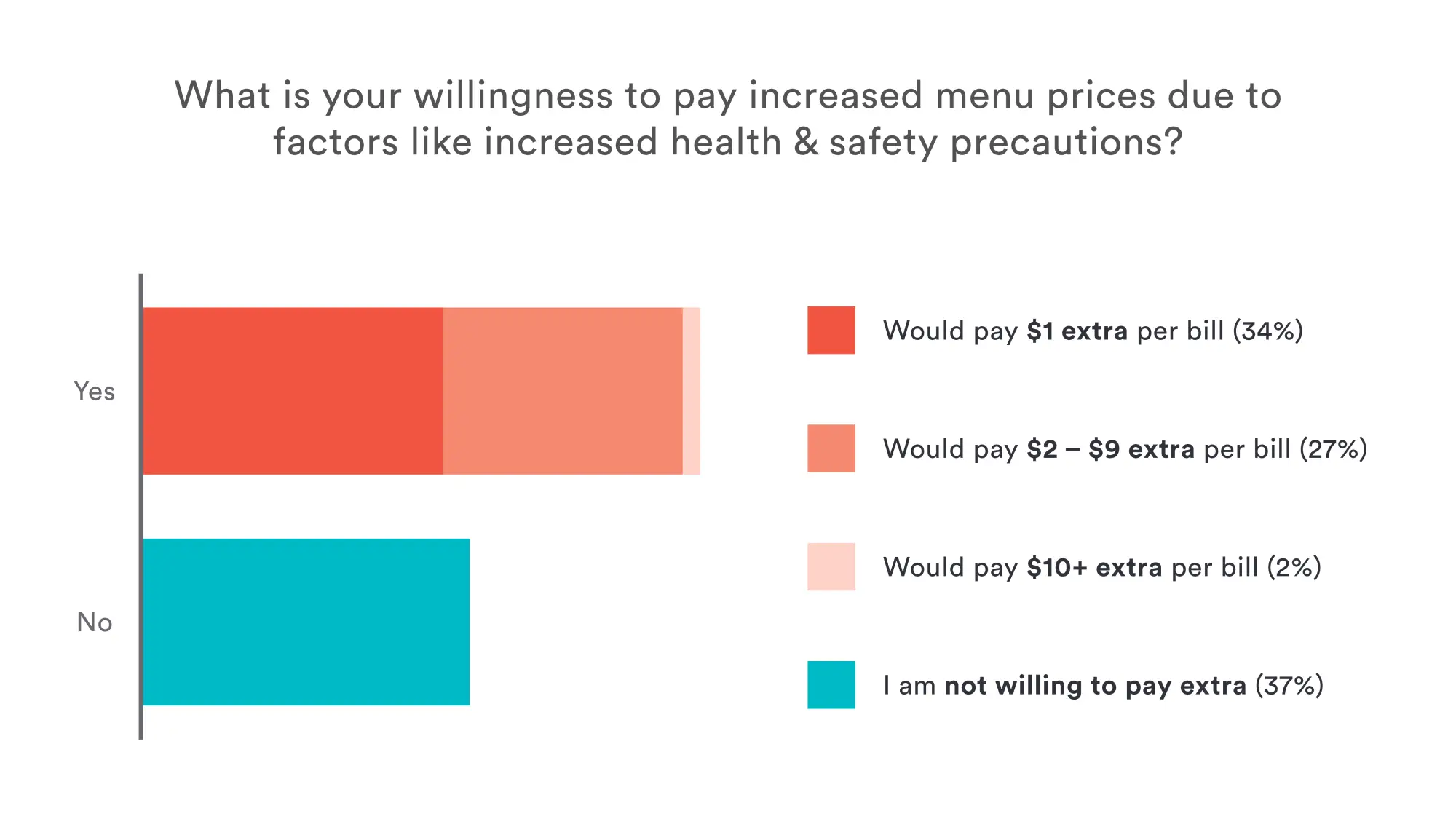
Due to increased health and safety precautions, it’s possible that menu prices would increase to cover costs. When asked, 34% of diners would pay $1 extra per bill, 27% would pay $2—$9 extra per bill, and only 2% would be willing to pay $10+ extra per bill. 37% of diners are not willing to pay extra. It’s encouraging to see that diners across the U.S. are willing to pay increased order totals. Restaurants can begin to think about increasing menu item pricing for dine-in meals and adding COVID-19 donation options or added fees for packaging costs to online ordering sales.
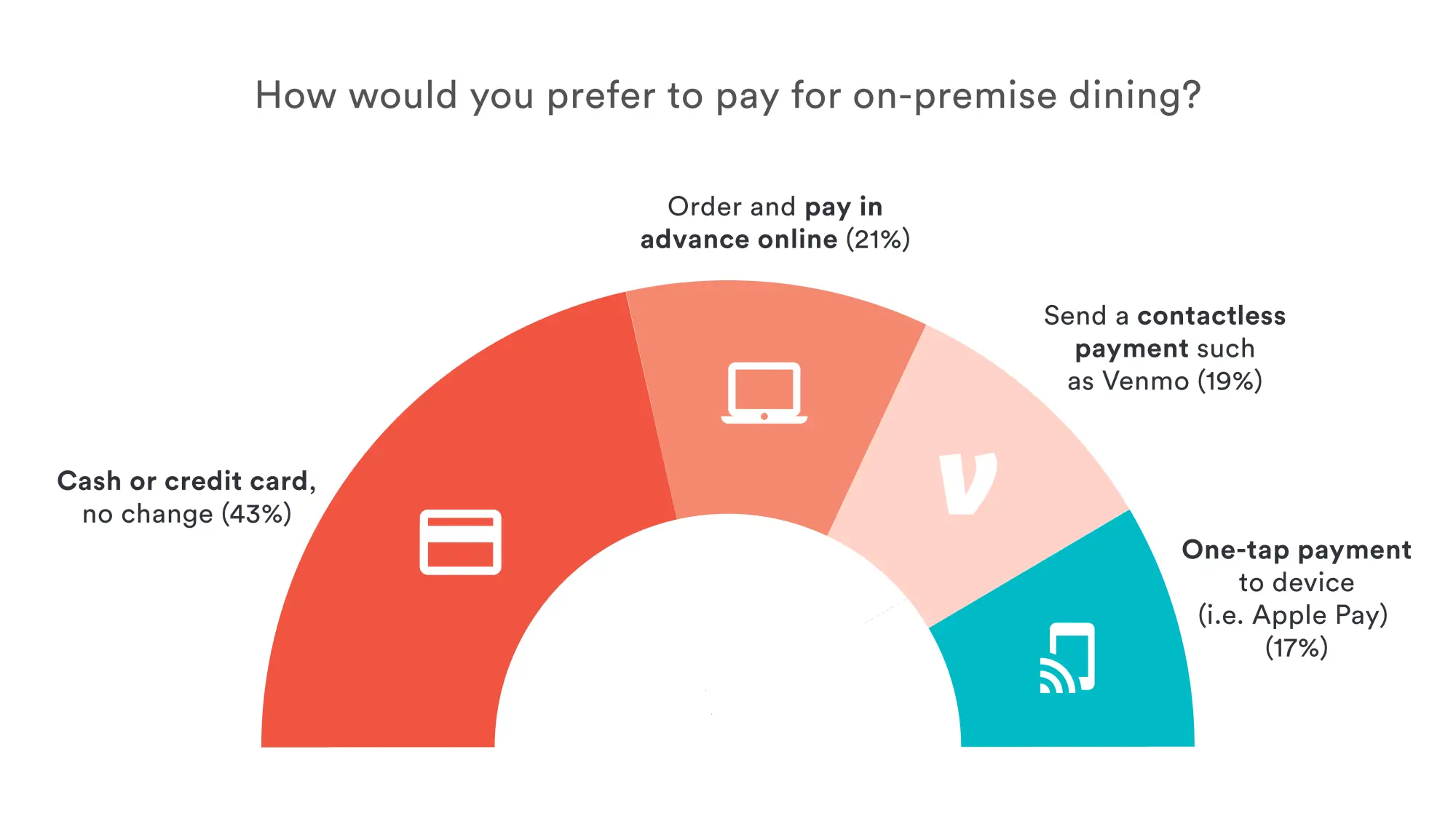
When diners were asked their payment method preference when dining on-premise, 43% prefer to pay with cash or a credit card without receiving change while 21% would prefer to order in advance and pay online, 19% would prefer to send a contactless payment with an app like Venmo, and 17% prefer to pay with a one-tap payment device such as mobile pay. It’s advisable for restaurants to promote credit card use and contactless payment methods for their guests.
First Stop for Up-to-Date Information

When researching information about a specific restaurant during COVID-19, the majority of diners look up a restaurant’s website over a Google listing, Facebook page, by calling the restaurant, Instagram, or Yelp. Restaurants can provide important up-to-date information on your website with updated menus, hours of operation, procedures, alerts, even promote online ordering.
Guest Expectations for On-Premise Dining
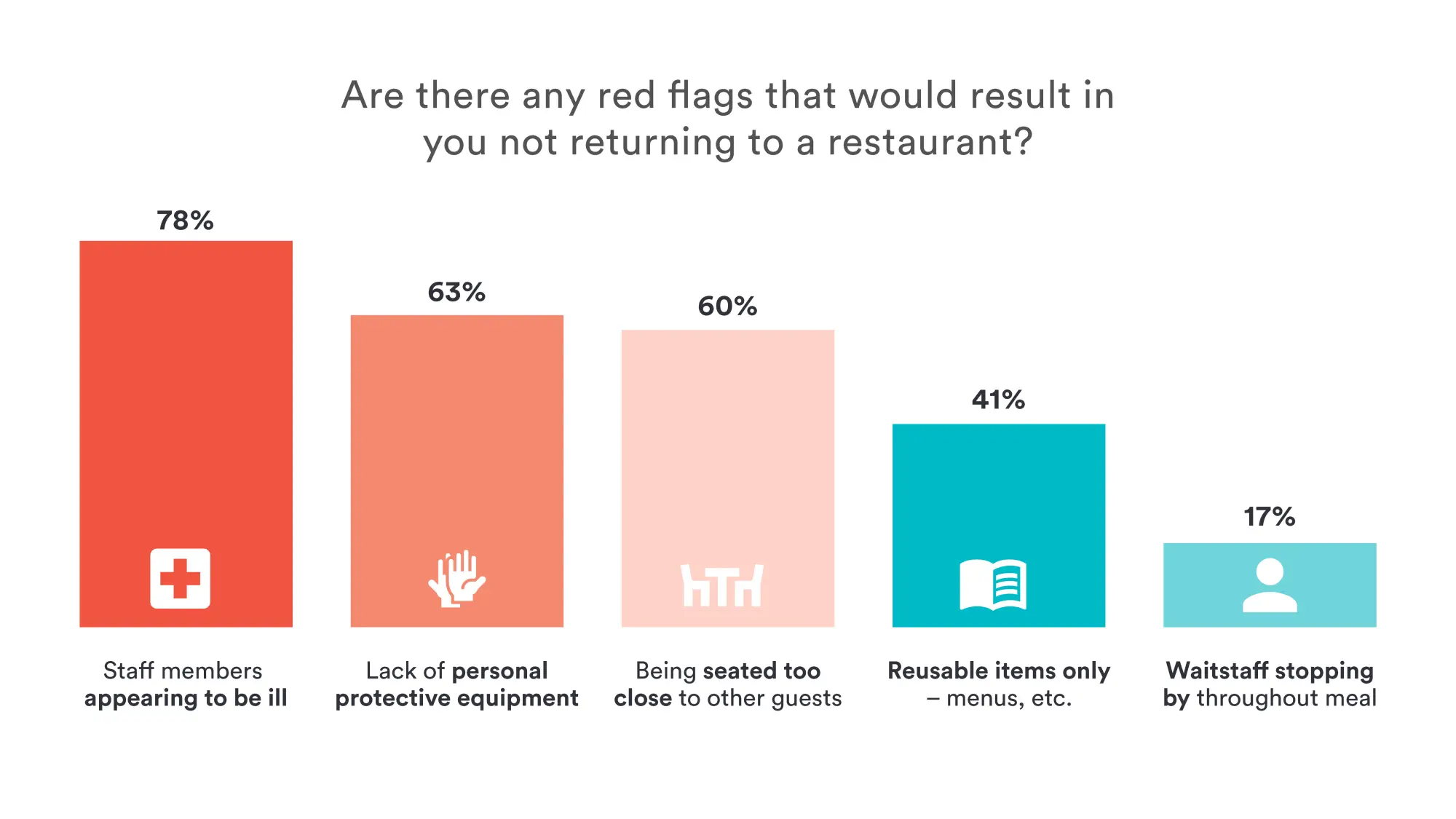
The majority of diners flagged that staff members appearing to be ill was the biggest red flag in their decision to return to a restaurant. From there, a lack of PPE, being seated too close to other guests, the use of reusable items such as menus, and the cadence of waitstaff visiting the table during a meal would be red flags. It’s important for restaurants to be aware of these red flags and to avoid these possible issues by training their staff and adjusting their operations accordingly.
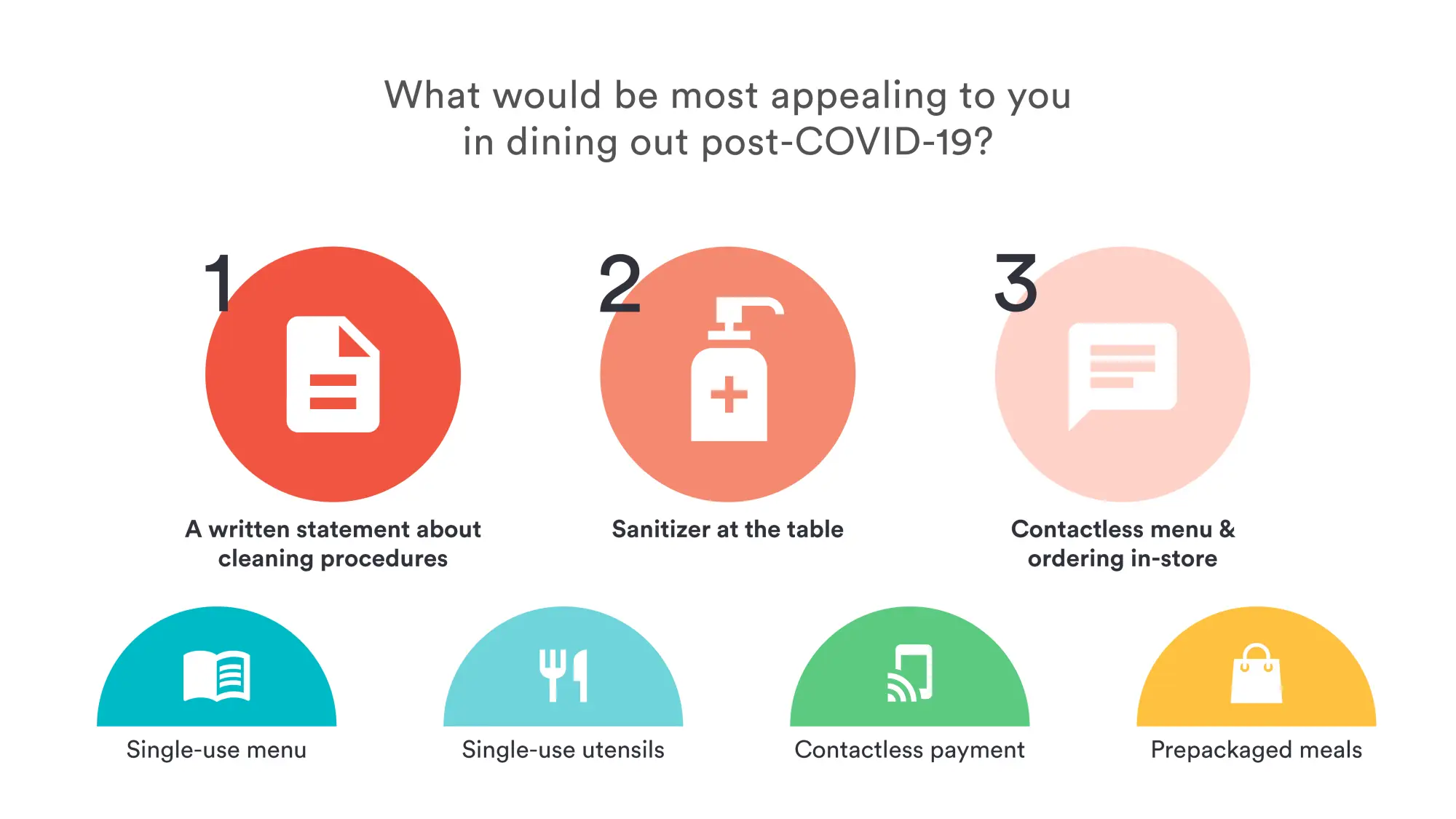
When asked what would be most appealing when dining out, the top 3 answers from diners were seeing a written statement about cleaning procedures, having sanitizer at the table, and offering a contactless menu and ordering process in-store. Other appealing factors include single-use menus, single-use utensils, contactless payment methods, and prepackaged meals. It’s helpful to know what your guests are looking for. By putting together a clear reopening strategy and adhering to best practices, restaurants can provide peace of mind and create more loyal diners.
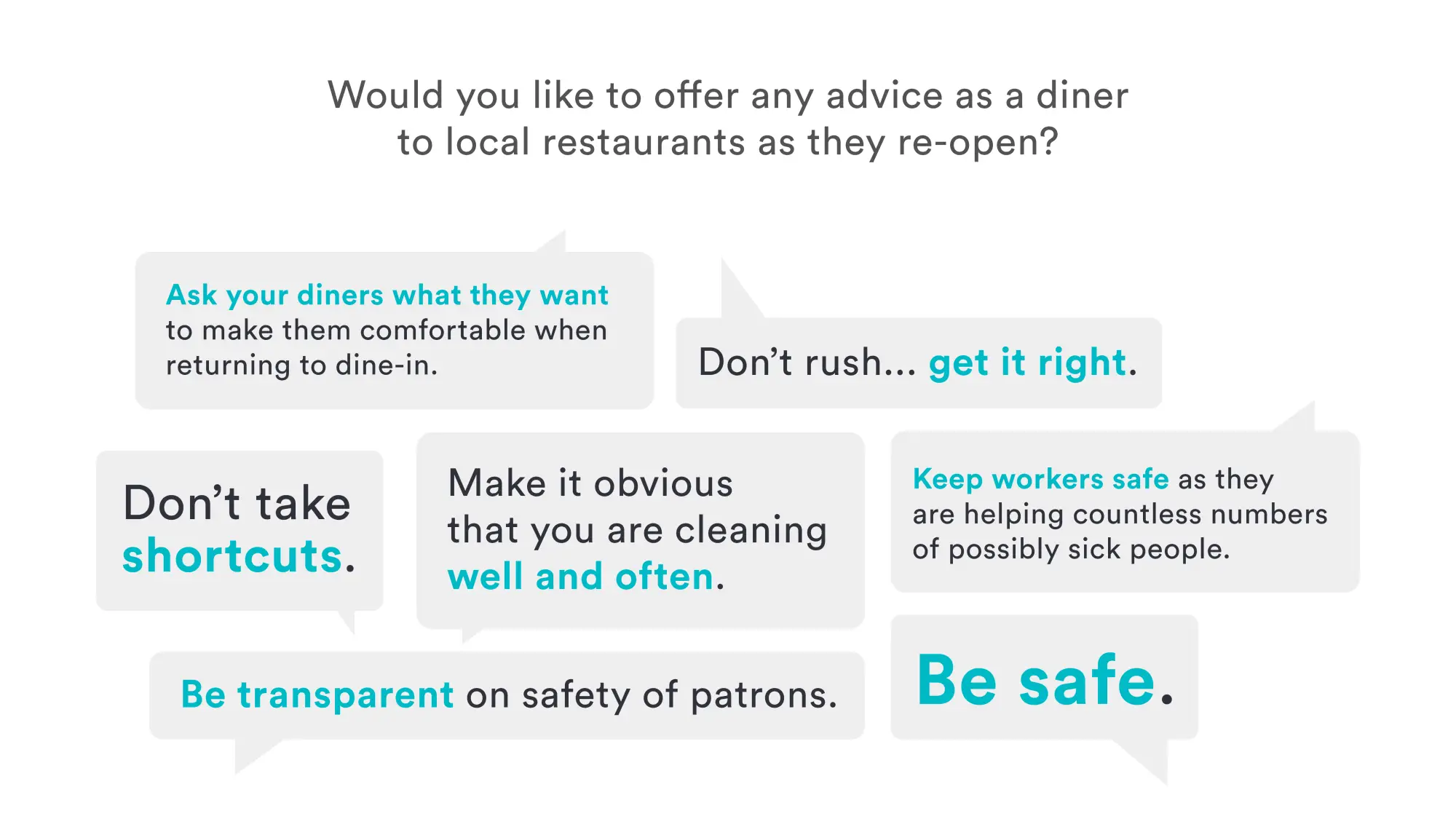
When given the opportunity to give advice for local restaurants as they reopen, diners had a diverse mix of answers. The word safe came up the most often.
As restaurants begin to reopen their doors and fire up their grills, it’s important to recognize the needs and expectations of their customers prior to doing so. Having a clear and strict strategy for reopening will not only benefit the restaurant but will facilitate a faster recovery to normalcy.

BentoBox Marketing & Commerce Platform
Deliver Smarter Hospitality
Want to stand out online, bring in more money, engage your diners, and streamline operations?
Recommended
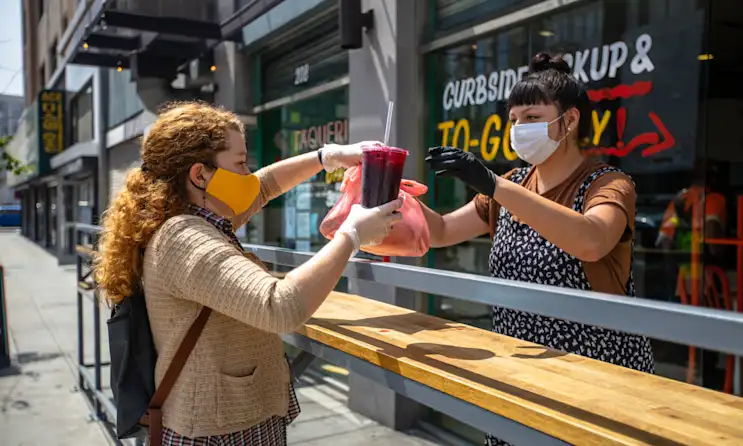
COVID-19
How To Get Started and Maximize Curbside Pickup Revenue
June 8, 2020
Tips on starting and maximizing curbside pickup revenue for your restaurant and why it’s essential for restaurants going forward.
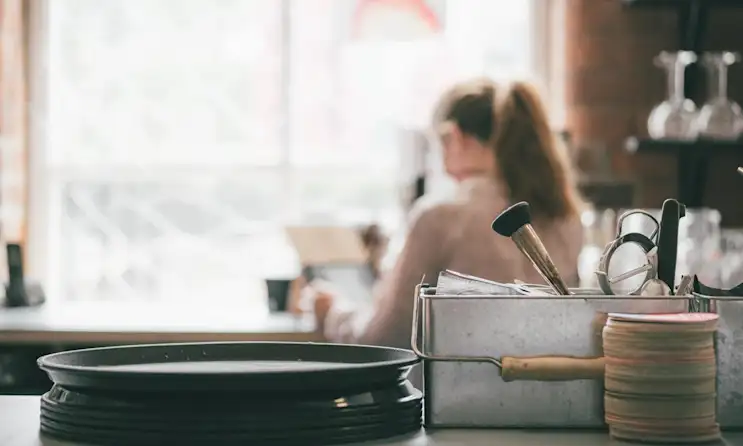
COVID-19
Restaurant Marketing Tips: How To Promote Reopening and Increase Sales
April 14, 2021
As restaurants reopen, operators will need to promote latest operations to drive business through website, email and social media
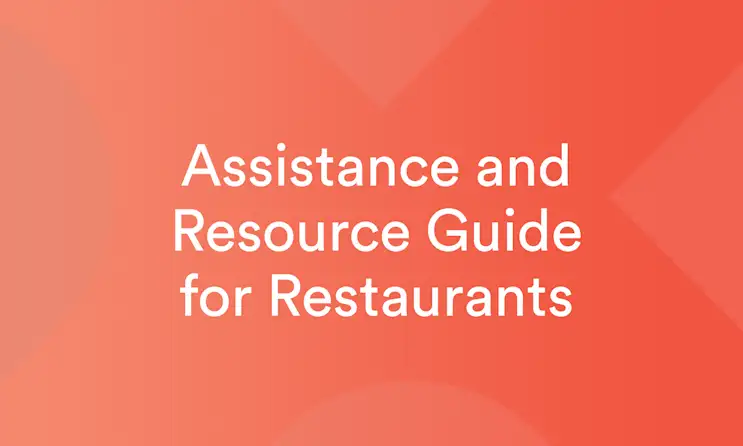
COVID-19
Assistance and Resource Guide for Restaurants
March 27, 2020
A resource guide for restaurants and bars impacted by the COVID-19/Coronavirus crisis.
